2020 Ford Mustang Shelby GT500 Is a 760-HP Thrill Ride
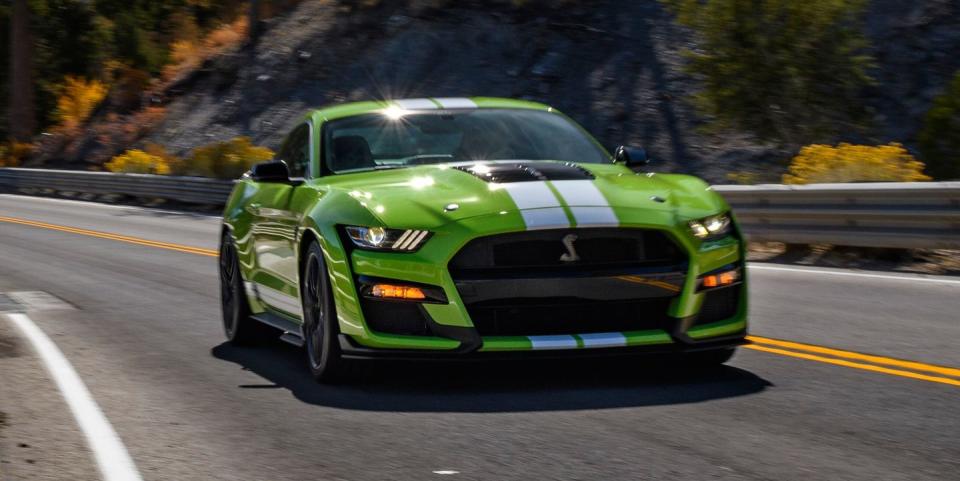
The Chevrolet Corvette team may have moved on, but the engineers at Ford Performance still have unfinished business with the front-engine, rear-wheel-drive architecture of the new-for-2020 Mustang Shelby GT500. The Blue Oval's last mother of all Mustangs, the 662-hp 2013 Shelby GT500, couldn't outrun its live rear axle on a demanding road course or the best back roads, and the pursuit of a 200-mph top speed made that car a one-straight-line-trick pony. The latest GT500 is redemption and then some.
Packing 760 horsepower, a seven-speed dual-clutch automatic transmission, adaptive magnetorheological dampers, and optional Michelin Pilot Sport Cup 2 racetrack-focused tires, Ford says the new Shelby is the quickest factory Mustang ever, both in a straight line and around a racetrack. In a reversal from the last-gen car, this GT500 is at its best when the pavement curves. It changes directions with sports-car precision, improving on the excellence of the Shelby GT350 with its even-wilder capabilities.
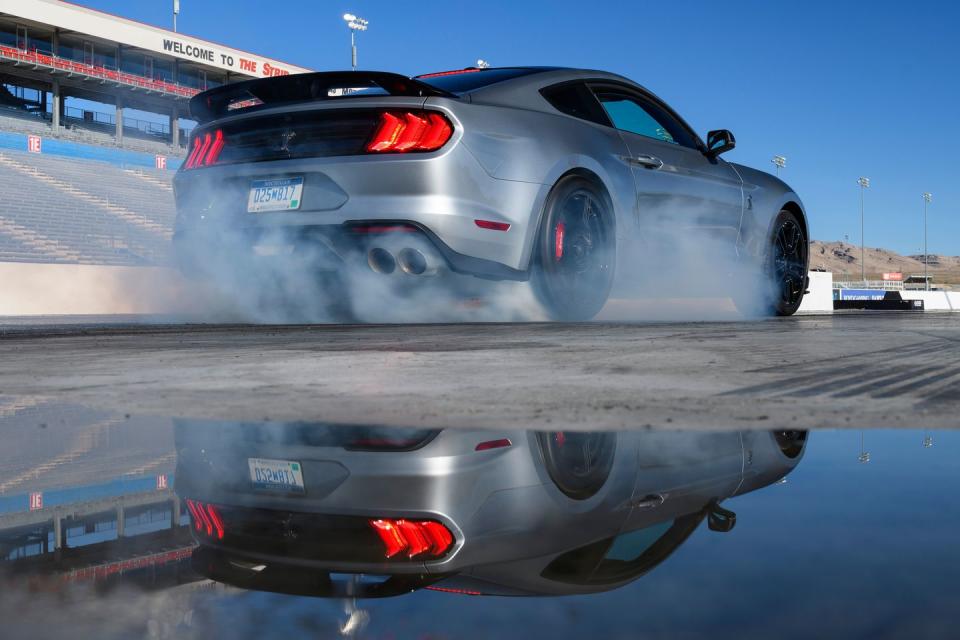
A Building Block for Success
While the GT500's supercharged 5.2-liter V-8 is built around the same block as the GT350's naturally aspirated mill, the two engines are more different than they are similar. The GT350's long intake runners are traded away to clear space in the engine's valley for Eaton's largest supercharger, which pumps up to 12.0 psi of boost into the cylinders. At the bottom end, the GT350's signature flat-plane crankshaft has been replaced with a conventional cross-plane crank that calms the engine's vibrations.
It can't match the GT350's 8250-rpm ceiling, but the GT500 hunts for its lofty 7500-rpm redline with a similar intensity. The engine can easily smoke both the standard Michelin Pilot Sport 4S and the Cup 2 tires off the line, yet the low end feels soft in comparison to the V-8's feverish upper reaches. In place of the GT350's visceral yowl, the GT500's four-mode exhaust shouts a deeper, bawdy roar that will be familiar to anyone who knows the sound of General Motors's blown small-block V-8s. The Predator sounds less exotic than the Voodoo but no less fierce.
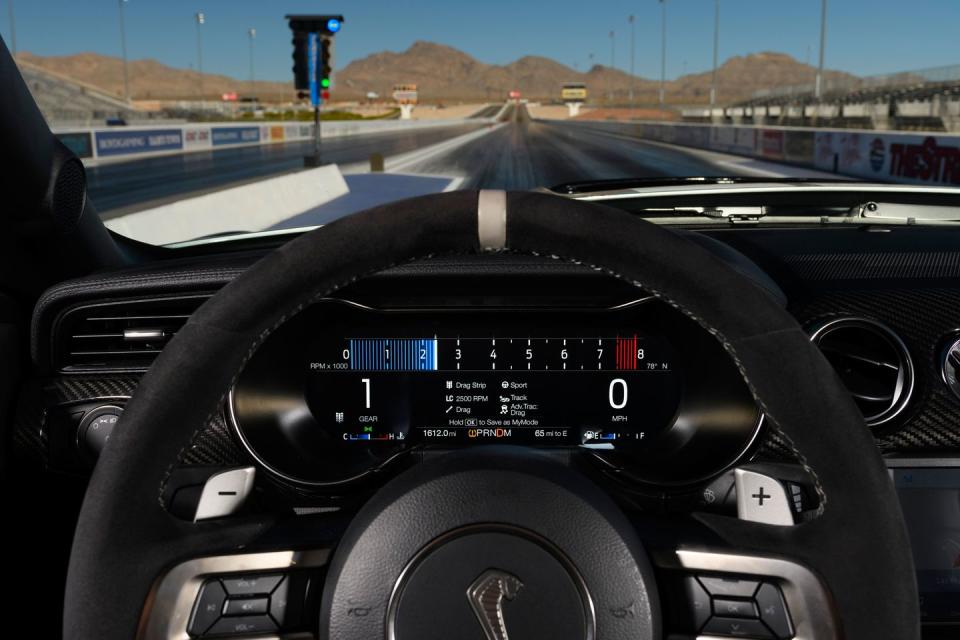
Ford claims the GT500 can crack 60 mph in 3.3 seconds and clear the quarter-mile in 10.7 seconds on a drag strip prepped for optimal traction. In our testing, we expect a 3.5-second run to 60 mph and a 11.0-second quarter-mile. That's hardly slow, but the quickest factory Mustang still can't match the mid-engine heroes that reliably hit 60 mph in less than three seconds with less power. The GT500 is up against the same traction limits that pushed Chevrolet to reimagine the Corvette with the engine behind the passenger compartment.
The sole transmission, a Tremec seven-speed dual-clutch, is as central to the GT500's character as its 760 horses. Quick to shift and alternately smooth or snappy depending on what you ask of it, this transmission just might rewrite Ford's limited (and troubled) history with dual-clutch transmissions. The shift paddles call for gear changes before they've traveled their entire stroke, and they are wired directly to the transmission controller, bypassing the powertrain control module to improve response time. The immediacy of these driver-initiated shifts makes the paddles as engaging as any we've ever flicked.
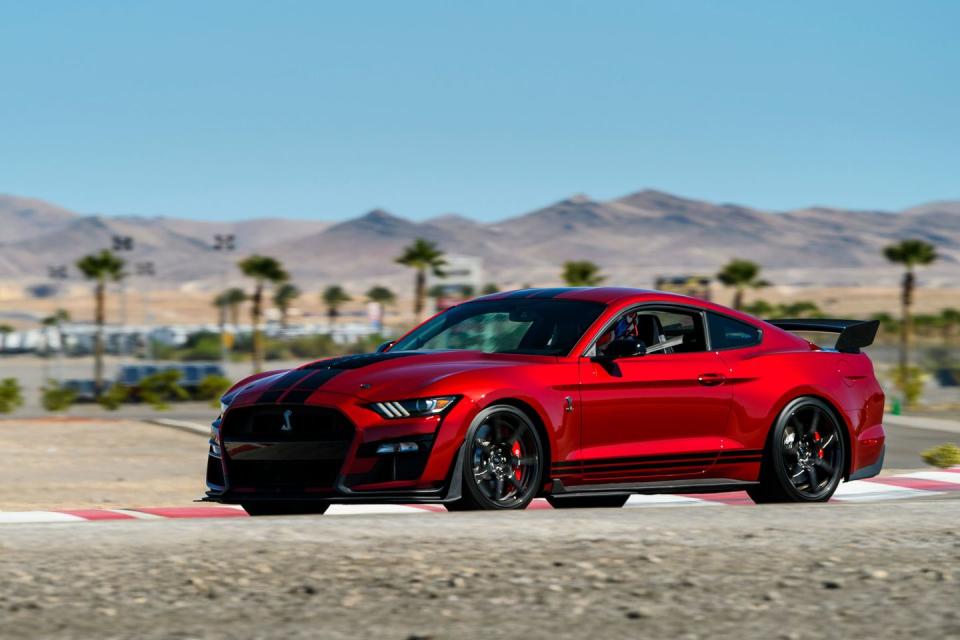
The gearbox bangs out its quickest shifts in Sport mode, in which it holds gears longer and smartly downshifts under braking to keep the engine simmering around 2500 to 3000 rpm. In Track and Drag Strip modes, gear changes are programmed for the best acceleration, which means they are slightly slower start to finish but with less torque interruption. The result is a shift that feels less aggressive but ultimately makes for a quicker car.
The transmission isn't without a few minor flaws. Launch control includes a brief but palpable pause after you release the brake pedal and before the transmission catapults the GT500 into the horizon. And at rolling stops on the road, the transmission often holds second gear when you're expecting it to downshift into first, leaving the GT500 flat-footed while, say, entering an intersection you otherwise want to clear post haste.
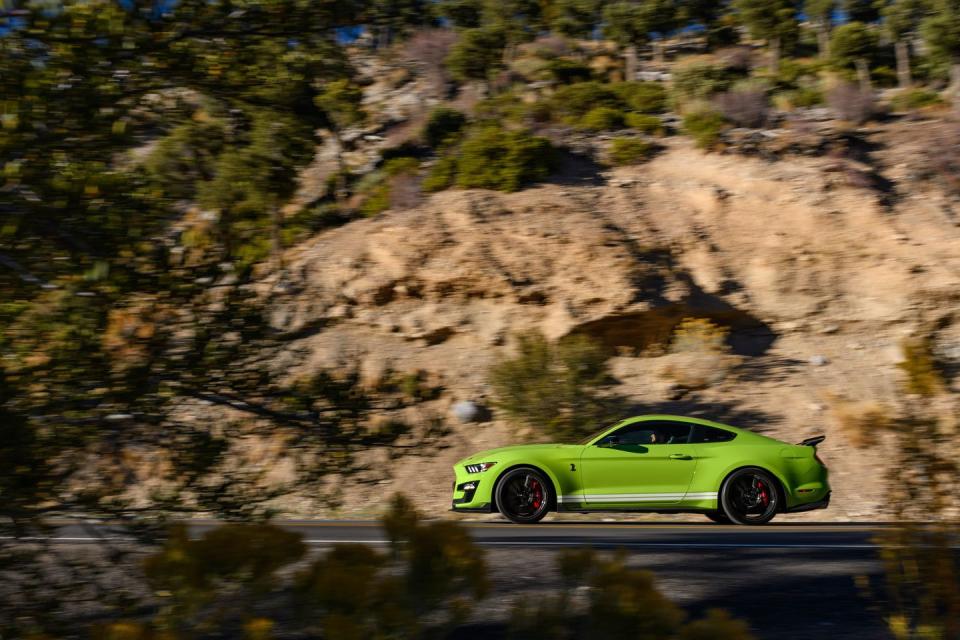
Knife-Edge Handling
You can't catch the GT500's chassis sleeping, though. Whether it's hustled up a mountain road in Normal mode or driven on edge in its Track setting, the Shelby cuts into corners with finely honed sharpness. It steers with the same accuracy and immediacy that helped the GT350 to a recent comparison-test win, and the electrically assisted rack allows for just-right heft, feeling neither too light nor artificially heavy. The brake pedal stroke is on the long and soft side of perfect, but that's by design rather than due to thermal fatigue. With iron discs bigger than a large pizza up front, the stoppers shrugged off track abuse as if we were idling down the Las Vegas strip.
The magnetorheological dampers massage both ends of the ride-and-handling equation, taking the edge off the squarest hits and retaining tight control of the roughly 4200-pound GT500's body motions even as lateral forces surpass 1.00 g. The Cup 2 tires that are part of the $18,500 Carbon Fiber Track package deliver enough grip to power out of corners early and under full throttle with confidence that they're going to find purchase. Finding that reassurance to trust the tires is key to exploiting the GT500's full capabilities, because its muted steering feel doesn't give much warning as the tires near their limit. You work your way up to the edge, discover how docile and obedient the GT500's chassis is, and thereafter hammer the Shelby knowing that when the tires give up, this Mustang is easily reined in.
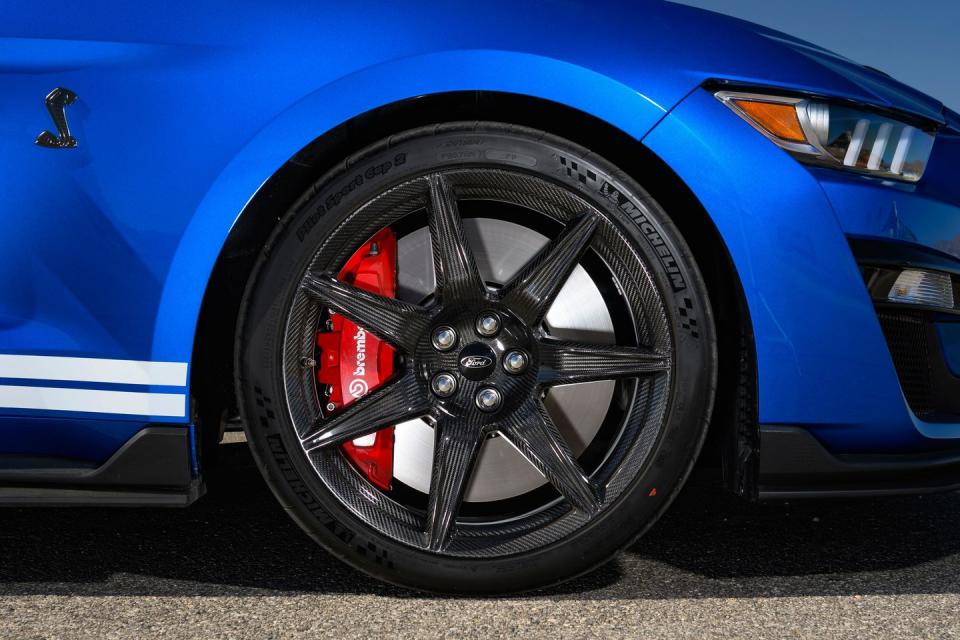
The Porsche Parallel
Speaking of confidence, the Shelby GT500 starts at $73,995, or $9300 more than its chief rival, the Chevrolet Camaro ZL1 (which, admittedly, comes standard with a manual transmission). But perhaps the bigger rivalry resides within the Ford family. Is the Blue Oval's stable big enough for both the Shelby GT350 and the GT500? Ford officials proudly point out that the company now offers 12 Mustang variants. The lineup is nearly as comprehensive as the Porsche 911 range. In that context, there may just be room for two Shelby 'Stangs. Think of the naturally aspirated, manual-transmission-only GT350 as Ford's own Porsche 911 GT3 and the Shelby GT500 as Ford's 911 GT2 RS, and you'll understand both how similar and different these two cars are. Yeah, we're comparing Mustangs to Porsche's best sports cars. The Shelby GT500 is that good.
You Might Also Like

 Yahoo Autos
Yahoo Autos 